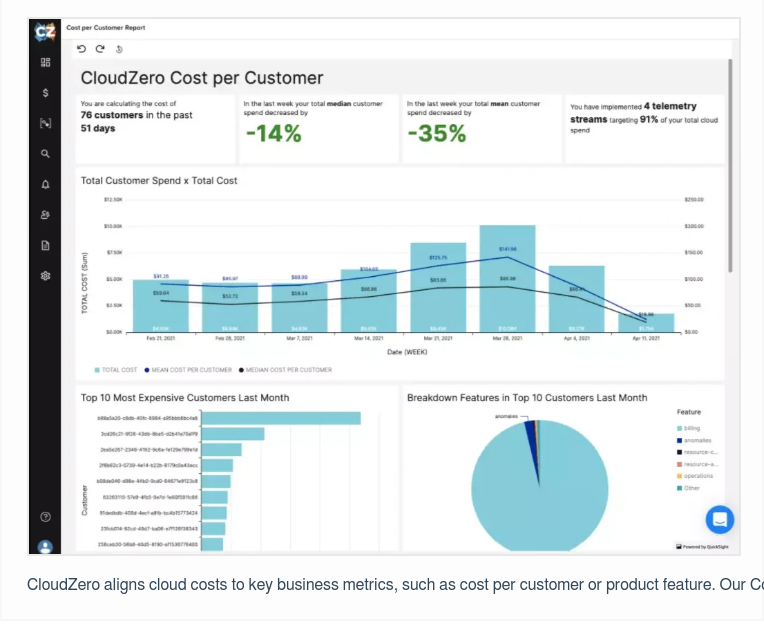Flexibility is one of the cloud’s biggest benefits, but also one of its biggest challenges. When you have different teams using resources in the cloud and deploying instances at the click of a button, your cloud environment could easily become chaotic. Without a definitive plan governing your cloud operations, your costs will inevitably spiral out of control.
A cloud cost strategy is your action plan for managing costs and staying profitable while working and building products in the cloud.
But whether you have a cloud cost strategy or you don’t, there are some telltale signs that indicate your current approach isn’t working. If you’re experiencing any of the four indicators below, you know it’s time to reassess the way you manage costs.
4 Warning Signs Your Cloud Cost Strategy Isn’t Working
Sign #1: Answering cost-related questions is a major hassle
One of the clearest signs of an ineffective cloud cost strategy is that your engineering team dreads cost-related questions. If you spend a significant amount of time manually rummaging through spreadsheets and reports to explain your cloud costs, then your strategy needs an overhaul.
A good strategy should monitor costs continuously, and provide granular visibility into the components of your cloud bill. This steady stream of information makes it easy to give quick and reliable answers to cost-related questions, without wasting valuable hours of engineering time.
For example, by adopting CloudZero’s cost intelligence platform, the Malwarebytes team saved up to 10 hours a week that was spent drilling into reports to deliberate on budgets and communicate with various teams.
Sign #2: Finance (or engineering) can’t explain the cloud bill in clear business terms
If nobody on your team can confidently explain an unusually high cloud bill in a way that satisfies engineering, finance, and administrative concerns, then your cost information is likely opaque. This means you are not putting cloud cost in a context that’s relevant to your business.
Conversations about costs shouldn’t revolve solely around whether the bill is going up or down. Your finance and engineering teams should be able to align cloud spend to specific products, features, or customers, depending on what’s happening at the time, and what’s most important to your business.
For example, if you’re adding new customers, you should be able to tie the cost of servicing those customers to specific products or features, instead of merely looking at a lump-sum AWS bill.
Sign #3: You can’t predict your cloud costs
The ability to predict cost is crucial for decision-making. If you can’t predict how your cloud costs will change as your business changes, then it’s a warning sign.
For example, if you plan to onboard new enterprise and small business customers, you should be able to anticipate the cost of servicing those additional customers. That is, you should be able to say, it will cost $X to provide this feature to one enterprise customer.
This information will help you plan accordingly, based on your sales and company goals.
Sign #4: You can’t quickly identify cost abnormalities
What happens if a team leaves a debug log on over the weekend? Can your current strategy catch that quickly, before it becomes a significant expense?
Your strategy should include a proactive detection plan that allows you to identify cost abnormalities in real-time.
For example, CloudZero’s cost intelligence solution includes an anomaly detection feature that alerts engineering teams within Slack when there is an unusual spike in cost so they can take action. Such systems should be an integral part of your cost management strategy.
Adopt A Proactive Cloud Cost Strategy With CloudZero
An ineffective cloud cost strategy puts undue pressure on all teams involved. CloudZero’s cost intelligence platform empowers engineers with exactly the data they need to manage cloud costs more effectively.
With CloudZero, you get better insight into your unit costs so you can accurately predict spend and make crucial business decisions. CloudZero also allows you to create a shared language for engineering and finance teams so both teams can better understand your cloud bill as it relates to important business outcomes.
 to learn more about how CloudZero helps you develop a robust cloud cost strategy.
to learn more about how CloudZero helps you develop a robust cloud cost strategy.









